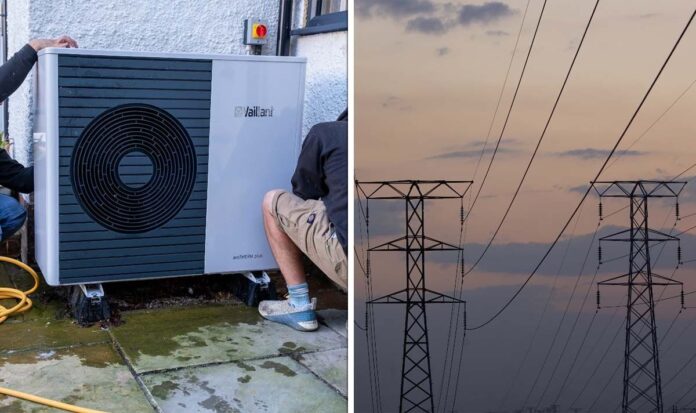Kensa, a leading UK heat pump manufacturer are developing a “better version” of its existing heat pump technology in a move that may be critical for the country’s electricity infrastructure. That’s according to Dan Roberts, the company’s technical director. Its “revolutionary” ground source heat pumps have been awarded UK Government funding from the Department for Business, Energy and Industrial Strategy (BEIS), to accelerate its development for mass market deployment. One of the key benefits of the technology is that these heat pumps can use far less energy during peak hours of the day, when the demand on the UK’s electricity grid is high. Once rolled out to the mass market, this technology could prove critical to the UK’s energy security, particularly as this winter, the National Grid has warned that it may have to impose three-hour blackouts this winter. The Government has reportedly “war-gamed” an even more severe scenario, accounting for a seven-day period of blackouts in the event that the UK can’t shore up enough energy imports from Europe.Speaking to Express.co.uk, Dan Roberts, technical director at Kensa Heat Pumps said: “We’ve developed what we call the highly flexible storage heat pump now.What we’ve done is we’ve replaced our condenser heat exchanger with two heat batteries in the refrigeration cycle.”Every time you heat exchange there has to be temperature difference, so we’ve made it better straight away.” Heat pump breakthrough as ‘better’ version to help National Grid swerve winter blackouts (Image: Getty) A look at Kensa’s heat pump technology (Image: Kensa)”What that’s allowed us to do, we’re making better use of different types of refrigerant gas. This helps us produce hot water at heating efficiencies.”Kensa says that the thermal battery capacity allows their heat pumps to hold heat for a significant amount of time by making the technology more efficient and separating the demand for heat and hot water from its generation.He said: “The real benefit of this product is it’s in flexibility by being able to store heat in the heat pump. The products we’ve made prototypes of- we have five working prototypes in the field- gives us 12kwh of storage.”We’ve been able to move the peak demand of that property to off-peak, lower-carbon, lower cost energy.” This way, the heat pump will run at times when the electricity is cheapest, and store the heat to use for later. READ MORE: Heat pump owners primed for huge stamp duty boost with new proposal The cost of renewable electricity is falling (Image: Express) How do conventional heat pumps work? (Image: Getty)He added: “The real kicker is without impacting the tenant’s comfort levels, they are unaware of that. They still have their heating when they want it on. They get home from work between 5:30 and 8, but the compressor isn’t running, only the circulation pump in the heat circuit.”It makes it a better version of what’s in the market, and also we believe answers a lot of the concerns that have been raised around heat pumps.”While the transition from natural gas to electricity from renewables has significant benefits in terms of costs and its positive impact on the climate crisis, critics have pointed out that the massive electrification drive would result in the need for a massive overhaul of the National Grid’s energy infrastructure. However, Mr Roberts claimed the need to upgrade the infrastructure will be far less as their heat pumps will be “using less electric, and we’re also using it at a time when there is less electric.DON’T MISS: British Gas and Octopus Energy join new scheme to slash bills [REPORT] The energy companies paying customers to do their washing at night [ANALYSIS] Sturgeon’s Indyref dream dealt another blow as Scots back UK [REVEAL] The National Grid has warned of three hour blackouts (Image: Getty)”If we can take that peak from say 5pm to 8pm, or even in the morning from 7am to 9am, and if we can move that to a time when the wind turbines are producing and the load is low. Then we’ll need fewer power stations and fewer offshore wind farms.”The concern is that during peak times when everyone gets home from work and starts cooking, get the heating on, that’s when we see those peak demands. “If we can take that heating and hot water load away from that period, we’re reducing that peak significantly. There are a lot of other benefits as well. The ease of installation on this product is far easier.”While prototypes are currently being trialled in a small number of properties, being developed as part of the BEIS Heat Pump Ready Programme means the product can be designed to meet volumes with the aim of reducing manufacturing costs to drive down the cost of heat pump units in the future.
The UK firm planning a heat pump breakthrough to swerve blackouts
Sourceexpress.co.uk
RELATED ARTICLES


